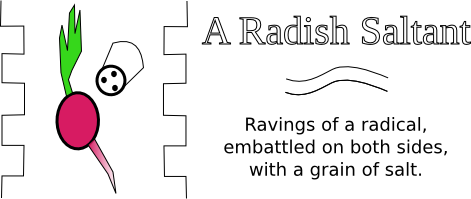Today we get a quick dose of microbiology and an explanation of how Bat Soup, 2019-nCoV, SARS-CoV2, (whatever you wish to call it, see a note about disease names at the bottom!), gains access to a cell and starts to infect a human host.
The more
basic information people know about this disease, the more tools they
have to interpret the news reports (which are often very poorly done by
people who know no more than you do). This gives you a chance to make
rational decisions, maybe understand what to fear and what not to. My background is described at the top of the Bat Soup for the Soul: Teaching with Coronavirus article I wrote previously.
This particular virus uses a vulnerability in the Angiotensin Conversion Enzyme 2 (ACE2) found in many human cells and, in particular, epithelial cells (lining) in the lower lung. This is the same receptor used by SARS-CoV, but quite different from MERS-CoV, the common flu, etc.
Note here that there are plant compounds or "phytochemicals" which also bind weakly to this receptor and may inhibit (temporarily block) viral activity. Host receptor blockage by phytochemicals or synthetic compounds is a hot area of antiviral research. The object, of course, is to find something which inhibits the virus without itself causing damage to humans. There are actually a substantial number of naturally-produced compounds which might do the trick with COVID-19. None have been clinically proven yet, though a few had some potential effect in studies with the original SARS outbreak in 2004 or show antiviral activity in vitro (in a test tube) or an animal model.

The coronavirus really does look a bit like a hairy ball (that is where it gets its name), but I have used a tiny bit of artistic license here.
The ACE2 receptor is part of the Renin-Angiotensin System, or RAS. The RAS regulates a number of important body functions, including respiration, heart rate, blood pressure, and kidney function. Some of you make take medications which target angiotensin or the ACE (Angiotensin Conversion Enzyme, part of a set of related functions with ACE2). These medications, called ACE inhibitors, may cause or indicate potential complications for Bat Soup, but this is still being researched. In any case, the virus, in addition to hijacking the cell for its own purpose, causes collateral damage to the RAS and complications throughout the body of the human host.
After gaining entry into the cell and using its own machinery to replicate, the cell dies and releases more virus particles to spread further. The human body has mechanisms to try to detect and destroy these hijacked cells before they release a virus cargo (also used to fight tumors) a cytokine called TNF (Tumor Necrosis Factor). When the immune system overreacts, cytokine's go crazy attacking everything in site, causing cell damage, inflammation, viral pneumonia, etc. in what is referred to as a "cytokine storm". It is though by many researchers that the cytokine storm may be triggered as a tactic by the virus, like causing a large-scale riot to cover up a break-in in a particular building. The chaos caused by the cytokine storm permits further and faster infection and may become deadly in its own right but is very hard for modern medicine to treat.
This is, of course, a very simple attempt at explaining a complex topic. More references are included below for the adventurous reader to explore further.
References
- Buhner, S. H. (2013). Herbal Antivirals: Natrual Remedies For Emerging and Resistant Viral Infections (e-book). Massachusetts: Storrey Publishing. Retrieved from https://www.scribd.com/book/176719013/Herbal-Antivirals-Natural-Remedies-for-Emerging-Resistant-Viral-Infections
- Includes an in-depth section on SARS, the ACE2 receptor, and potential phytochemicals, including sources, studies, and preparations. Extremely in-depth material, but the best one-stop source for plant compound antiviral activity, research, and practice.
- Chen, H., & Du, Q. (2020). Potential natural compounds for preventing 2019-nCoV infection Hansen. Preprints.Org, (January). Retrieved from https://www.preprints.org/manuscript/202001.0358/v1/download
- Wan, Y., Shang, J., Graham, R., Baric, R. S., & Li, F. (2020). Receptor recognition by novel coronavirus from Wuhan: An analysis based on decade-long structural studies of SARS. Journal of Virology, (January). https://doi.org/10.1128/JVI.00127-20
- Bat Soup for the Soul: Teaching with Coronavirus describes disease models and spread statistics to the non-epidemiologist with graphical illustration.
- The Confusing World of Disease Mortality Statistics in Simple Numbers
An Explanation of Names
When it was originally discovered, this virus, which was found to belong to the general family of the coronavirus, was simply labelled 2019-nCoV or "2019 novel coronavirus", novel, here, meaning simply previously unknown and poorly understood. As more about the virus was learned, it was renamed to SARS-CoV-2, formally signifying that it was closely related (but not identical to) the SARS outbreak of 2003-2004. The disease the virus causes is called COVID-19 (Coronavirus disease of 2019).
The two names can be a little confusing, but it is similar to HIV/AIDS: the human immunodeficiency virus (HIV) causes AIDS. Most of the time, the names can be used interchangeably unless you wish to make it clear that you specifically mean either the virus itself or its disease in humans. "Coronavirus" is often an acceptable shorthand as long as it is clear that it potentially refers to more than one virus which affect both humans and animals.
I started using the nickname "Bat Soup" before a formal name had been decided on, based on the urban myth (almost certainly not true) that the original victims got the virus from eating undercooked bat soup. In any case, this tiny virus has put many people in "deep soup".


